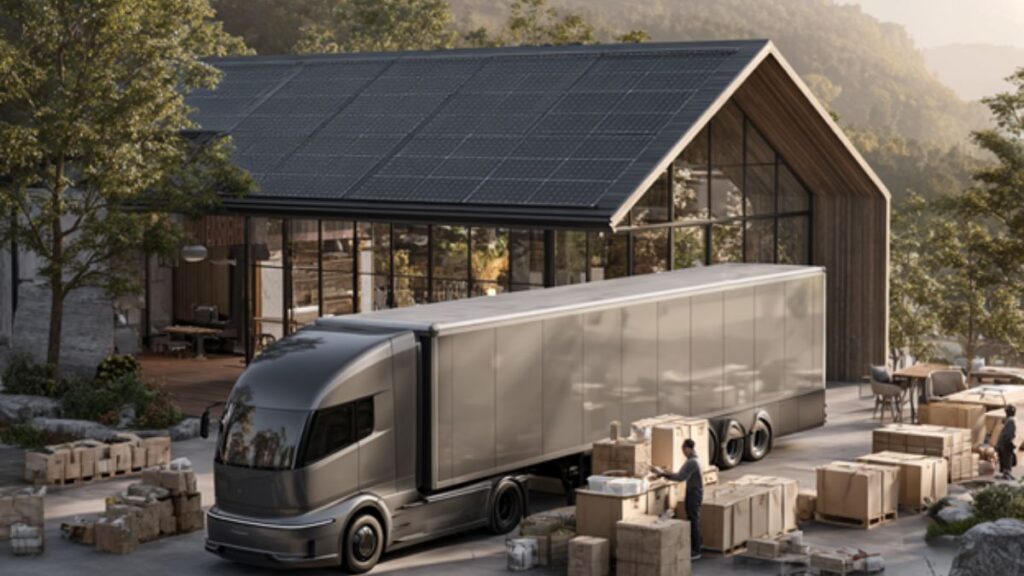The intersection of relocation services and environmental stewardship has created a fascinating paradigm where choosing an eco-conscious moving company becomes as crucial for planetary health as selecting renewable energy for your home, while sustainable relocation services now function like carbon-capturing forests that actively reduce environmental impact rather than merely minimizing damage. Think of modern green moving as the transportation equivalent of a Tesla replacing a diesel truck: the technology exists to transform an inherently carbon-intensive process into an opportunity for environmental restoration and resource conservation.
Like a well-designed permaculture system where every element serves multiple ecological functions, innovative storage solutions that prioritize sustainability demonstrate how thoughtful engineering can create products that solve practical problems while advancing environmental goals. The moving industry’s evolution toward sustainability mirrors broader technological shifts where environmental consciousness drives innovation, creating solutions that prove more effective than traditional approaches while reducing ecological footprints through smart materials, optimized logistics, and circular economy principles.
Modern AI-powered logistics systems revolutionize transportation efficiency, demonstrating how artificial intelligence can optimize route planning to dramatically reduce fuel consumption and emissions while improving service delivery, proving that environmental responsibility and operational excellence operate as complementary forces rather than competing priorities.
The Science Behind Sustainable Moving Technology
Environmental impact reduction in relocation services operates through multiple interconnected systems that function like an ecosystem where each component amplifies the benefits of others. Advanced materials science has revolutionized packing supplies, replacing petroleum-based plastics with bio-based polymers derived from agricultural waste, creating protective materials that biodegrade completely while providing superior cushioning and moisture protection compared to traditional alternatives.
Carbon fiber reinforced moving equipment weighs significantly less than steel equivalents while offering greater durability, reducing fuel consumption during transport while extending equipment lifespan. These engineering advances mirror developments in aerospace technology where weight reduction directly correlates with energy efficiency, creating compound benefits that accumulate across entire fleet operations.
The mathematics of sustainable moving prove compelling when analyzed through lifecycle assessment methodologies. Traditional moving operations generate approximately 2.3 tons of CO2 per household relocation, primarily through fuel consumption, packaging waste, and inefficient routing. Sustainable moving technologies can reduce this footprint by 60-75% through optimized logistics, renewable energy integration, and circular economy packing systems that eliminate waste streams entirely.
Smart sensors embedded in moving vehicles continuously monitor fuel efficiency, route optimization opportunities, and cargo load distribution, creating real-time feedback loops that optimize performance while gathering data for continuous improvement. These systems resemble precision agriculture technologies that maximize crop yields while minimizing resource inputs, applying similar optimization principles to transportation logistics.
Revolutionary Packing Materials and Methods
Biodegradable packing innovations have transformed protective materials from environmental liabilities into soil amendments that enhance rather than degrade ecosystem health. Mushroom-based packaging, grown from agricultural waste using mycelium, provides exceptional shock absorption while composting completely within 30 days of disposal, creating nutrient-rich soil amendments that support plant growth.
Seaweed-derived bubble wrap alternatives offer superior protective properties compared to plastic equivalents while dissolving harmlessly in water, supporting aquatic ecosystems rather than contaminating them. These materials demonstrate how biomimicry and biotechnology converge to create solutions that exceed traditional performance standards while operating within natural systems rather than against them.
Reusable container systems function like shipping container standardization for household goods, creating modular protective environments that eliminate single-use packaging entirely. These containers, manufactured from recycled ocean plastics and designed for hundreds of use cycles, transform the economics of moving while creating closed-loop systems that prevent waste generation.
The thermal regulation properties of advanced bio-materials provide climate control that protects sensitive items during transport while reducing energy consumption for temperature-controlled vehicles. Plant-based insulation materials derived from hemp and cork offer superior thermal performance compared to synthetic alternatives while sequestering carbon throughout their lifecycle.
Energy-Efficient Transportation Systems
Electric and hybrid moving vehicle fleets have evolved beyond early adoption challenges to provide superior performance compared to diesel equivalents in many applications. Advanced battery management systems enable long-distance relocations while regenerative braking systems capture energy during urban operations, creating transportation solutions that approach carbon neutrality in markets with clean electrical grids.
Solar panel integration on moving vehicle rooftops provides supplementary power for electric systems, reducing grid dependence while demonstrating renewable energy integration possibilities. These installations resemble mobile power generation systems that contribute to distributed energy networks while serving primary transportation functions.
Route optimization algorithms powered by machine learning analyze millions of variables simultaneously to identify pathways that minimize fuel consumption, reduce emissions, and optimize delivery timing. These systems consider weather patterns, traffic flow predictions, elevation changes, and vehicle load characteristics to create routes that traditional planning methods could never achieve.
Fleet management platforms integrate with smart city infrastructure to coordinate with traffic management systems, reducing congestion while optimizing fuel efficiency across urban transportation networks. This integration creates synergistic benefits that extend beyond individual moving operations to support broader sustainable transportation objectives.
Circular Economy Integration
Sustainable moving services increasingly operate within circular economy frameworks where materials flow through continuous use cycles rather than linear disposal pathways. Moving blankets manufactured from recycled textiles provide superior protection while creating markets for post-consumer fabric waste, transforming disposal problems into valuable resources.
Equipment sharing networks enable smaller moving companies to access sustainable technologies without capital intensity, creating collaborative business models that reduce resource requirements while improving service capabilities. These platforms resemble tool libraries for commercial operations, maximizing equipment utilization while minimizing manufacturing demands.
Post-move material recovery programs collect packing materials for refurbishment and reuse, creating reverse logistics systems that capture value from materials traditionally considered waste. These programs employ local labor for cleaning, repair, and quality assurance, creating employment opportunities while supporting environmental objectives.
Partnership networks with recycling facilities, composting operations, and materials recovery centers create comprehensive waste diversion systems that ensure no materials from sustainable moves enter landfill streams. These relationships function like industrial ecology networks where waste outputs from one operation become valuable inputs for others.
Technology Integration and Smart Systems
IoT sensors throughout the moving process monitor environmental conditions, handling impacts, and transportation efficiency in real-time, creating comprehensive data streams that optimize operations while ensuring cargo protection. These monitoring systems resemble precision agriculture networks that track soil conditions, weather patterns, and crop health to optimize growing conditions.
Blockchain technology creates transparent supply chains for sustainable moving materials, enabling customers to verify environmental claims while supporting accountability throughout service networks. This transparency builds trust while creating incentives for continuous improvement in environmental performance.
Mobile applications provide customers with real-time carbon footprint tracking, showing environmental benefits achieved through sustainable moving choices while gamifying conservation behaviors. These platforms function like energy monitoring systems that help households optimize electricity consumption through awareness and feedback.
Predictive maintenance algorithms optimize vehicle and equipment performance while reducing resource consumption and extending operational lifecycles. These systems prevent premature equipment replacement while ensuring peak efficiency throughout service lives, supporting both economic and environmental objectives.
Innovation in Sustainable Logistics
Consolidated shipping networks reduce transportation impacts by coordinating multiple moves along common routes, creating shared transportation systems that optimize vehicle capacity utilization. These networks resemble public transportation efficiency applied to goods movement, reducing per-unit environmental impacts through coordination and planning.
Modular loading systems enable precise space optimization that reduces the number of vehicles required for complex moves while protecting cargo through engineered load distribution. These innovations mirror shipping container efficiency gains applied to household relocations, creating standardization benefits that improve both environmental and economic performance.
Last-mile delivery optimization using electric cargo bikes and small electric vehicles reduces urban congestion while eliminating emissions in dense population areas. These systems integrate with existing bicycle infrastructure and urban planning initiatives to create comprehensive sustainable transportation networks.
Cross-docking facilities powered by renewable energy reduce storage requirements while optimizing load consolidation, creating distribution hubs that serve multiple environmental objectives simultaneously. These facilities demonstrate how infrastructure investments can amplify sustainable transportation benefits across regional networks.
Environmental Monitoring and Verification
Carbon accounting systems track emissions across entire moving operations, providing verified data for carbon offset programs and environmental impact reporting. These systems enable continuous improvement while supporting transparency that builds customer confidence in environmental claims.
Third-party environmental auditing ensures sustainable moving practices meet rigorous standards while identifying improvement opportunities through comprehensive performance assessment. These audits function like environmental certification programs that verify claims while driving industry standard improvements.
Life cycle assessment tools evaluate environmental impacts from material production through end-of-life disposal, enabling informed decision-making about sustainable technology investments. These assessments guide innovation priorities while ensuring environmental benefits exceed costs across complete product lifecycles.
Real-time environmental monitoring during transportation tracks air quality impacts, noise pollution, and ecosystem interactions, creating comprehensive environmental stewardship that extends beyond carbon emissions to consider broader ecological effects.
Community and Economic Benefits
Local sourcing of sustainable materials supports regional economies while reducing transportation impacts associated with global supply chains. These procurement strategies create employment opportunities in sustainable manufacturing while reducing environmental impacts through proximity and community investment.
Training programs for sustainable moving practices create skilled employment opportunities while advancing environmental expertise throughout the moving industry. These educational initiatives function like green job creation programs that build human capital while supporting environmental objectives.
Community partnerships with environmental organizations, schools, and local governments create educational opportunities that amplify sustainable moving benefits through awareness and behavioral change. These collaborations demonstrate environmental leadership while building social capital that supports broader sustainability initiatives.
Economic incentives for sustainable moving choices, including tax credits, utility rebates, and insurance discounts, create market conditions that favor environmental responsibility while making sustainable options more accessible to diverse customer segments.
Future Horizons and Emerging Technologies
Autonomous vehicle integration promises further efficiency gains while optimizing driving patterns for maximum fuel efficiency and minimal environmental impact. These technologies will enable precise coordination of vehicle fleets while reducing human factors that contribute to inefficient operation.
Advanced materials research continues developing bio-based alternatives to synthetic packing materials, with innovations in algae-based plastics, agricultural waste composites, and engineered biological systems showing promise for even greater environmental performance improvements.
Energy storage innovations enable longer-range electric moving vehicles while supporting integration with renewable energy systems, creating transportation solutions that approach carbon negativity in favorable conditions. These developments will expand sustainable moving accessibility while reducing costs through scale and technological advancement.
Integration with smart city infrastructure promises comprehensive optimization of urban goods movement, reducing congestion while improving air quality through coordinated sustainable transportation systems. These developments will create synergistic benefits that extend far beyond individual moving operations to support broader urban sustainability objectives.
The transformation of moving services into environmental restoration activities represents more than incremental improvement; it demonstrates how human activities can actively contribute to ecological health while meeting practical needs. For environmentally conscious consumers, choosing sustainable moving services becomes an investment in planetary health that provides superior service while supporting the technological innovations that will define sustainable transportation’s future.


